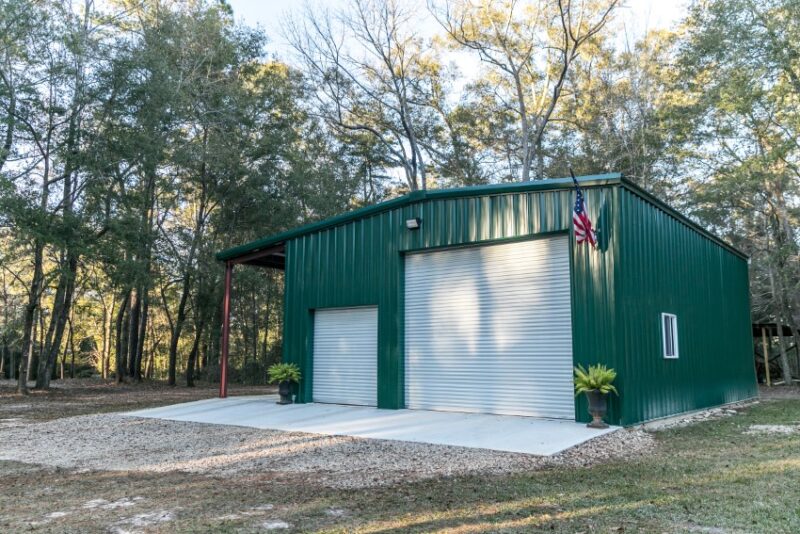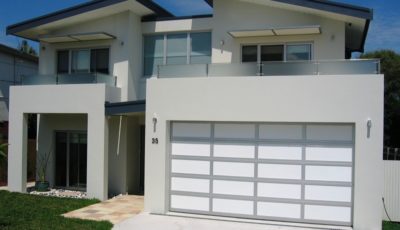Practical Solutions for Common Garage Door Problems
Is your garage door giving you trouble? Don’t worry, you’re not alone. Many homeowners experience issues with their garage doors, but the good news is that most problems can be easily fixed with a little troubleshooting. In this blog post, we will discuss some of the most common garage door problems and how you can resolve them. From noisy operation to a door that won’t close properly, we’ve got you covered. Let’s get started!
The Garage Door Won’t Open or Close
One of the most common issues homeowners face is when their garage door refuses to open or close. This could be due to a malfunctioning remote control, dirty or misaligned sensors, or a broken spring or cable. Start by checking the batteries in your remote control and making sure the sensors are clean and properly aligned. If this doesn’t solve the problem, you may need to call a professional to inspect the springs and cables.
Always exercise caution when dealing with garage door springs as they can be dangerous if mishandled. These springs are under a lot of tension and can cause serious injury if they snap or release unexpectedly. Make sure to never attempt to adjust or replace the springs yourself, as this should only be done by a trained professional. Be sure to keep children and pets away from the garage door when it is in operation to avoid any accidents. Safety should always be a top priority when dealing with garage doors.
The Garage Door is Making Strange Noises
If your garage door is suddenly making loud or unusual noises, it could be a sign of worn-out rollers, hinges, or tracks. Start by lubricating the moving parts with a silicone-based lubricant to see if that resolves the issue. If the noise persists, you may need to replace some of the components to ensure smooth and quiet operation.
Some common noises to look out for when your garage door is in operation include grinding, squeaking, or rattling sounds. These noises could indicate worn-out bearings, loose hardware, or damaged tracks. It’s important to address these issues as soon as possible to prevent further damage to your garage door and avoid any potential safety hazards. If you’re unsure about the source of the noise, it’s best to call a professional for garage door repair.
The Garage Door is Off Track
If your garage door appears crooked or won’t close properly, it may be off track. This can happen if the rollers are misaligned or if there is an obstruction in the tracks. Carefully inspect the tracks for any debris or damage and make sure the rollers are properly aligned. If the tracks are damaged, you may need to call a professional to repair or replace them.
If your cars are stuck inside the garage due to a malfunctioning door, don’t panic. You can still manually open the garage door by pulling on the emergency release cord. This cord is usually red and will disconnect the door from the opener, allowing you to manually operate it. Be sure to use caution when manually opening or closing the garage door as it can be heavy and may not stay open on its own. Once your cars are out of the garage, you can continue troubleshooting the issue or call a professional for assistance.
Remember to never use force when operating your garage door manually, as this could cause further damage and pose a safety risk. Always follow proper procedures and guidelines provided by the manufacturer or a trained professional.
The Garage Door is Stuck Halfway
If your garage door gets stuck halfway when opening or closing, it could be due to a broken spring or cable. This is a potentially dangerous problem that should be addressed by a professional immediately. Attempting to repair or replace a garage door spring or cable on your own can be risky and should only be done by someone with experience and the proper tools.
The Garage Door is Slow to Respond
If your garage door is slow to respond to the remote control or wall button, it could be a sign of a weak or dying battery in the opener. Start by replacing the batteries and see if that improves the response time. If the issue persists, there may be an issue with the opener itself that requires professional attention.
Replacing a battery for a remote control is a simple and straightforward process. Most remotes have a small compartment on the back that can be opened by sliding it or pressing a button. Once open, remove the old battery and replace it with a new one of the same type and size. Be sure to check the polarity of the battery (positive vs negative) before inserting it. Close the compartment and test the remote to see if it is functioning properly. If your garage door is still slow to respond, there may be an issue with the opener itself and you should seek professional assistance.
Troubleshooting common garage door problems doesn’t have to be a daunting task. By following the tips outlined in this blog post, you can quickly identify and resolve issues with your garage door on your own. However, if you encounter more serious or complex problems, it’s always best to consult a professional to ensure the safety and efficiency of your garage door. Remember, regular maintenance and inspection can help prevent many of these common issues from occurring in the first place.












